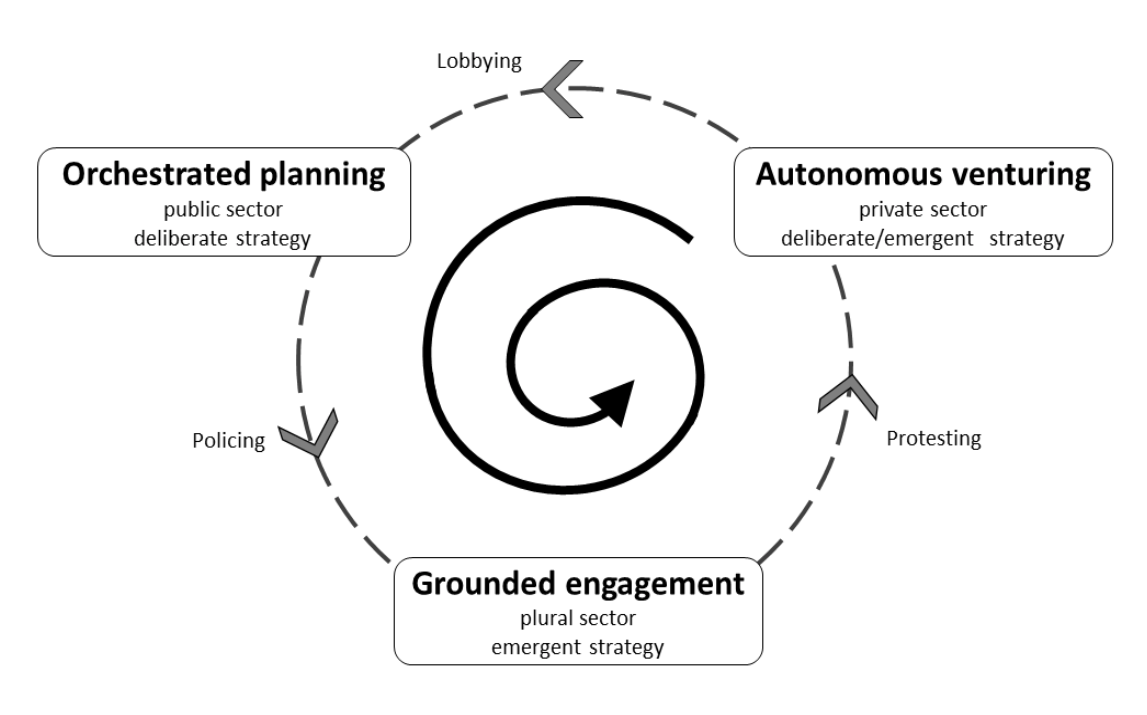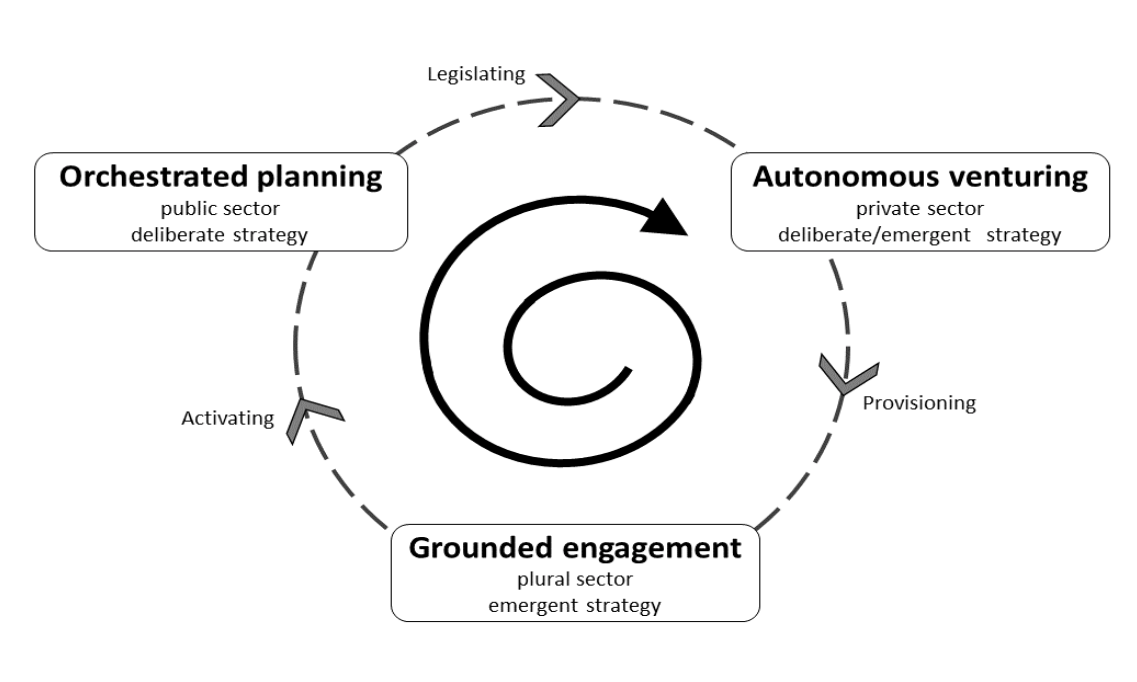PPPPs for Climate Change
8 December 2018Co-authored with Dror Etzion and Saku Mantere; adapted from “Wordly Strategy for the Global Climate” in the Stanford Social Innovation Review (Fall 2018).

Much has been written about PPPs: public private partnerships. But for vital issues such as climate change, a third partner has been missing: the plural sector.
Otherwise known as “civil society”, and other labels, this is the sector of NGOs, foundations, cooperatives, many of the world’s renowned universities, and more, including social initiatives and social movements—much of all this community-based. In other words, included here are all the associations that are neither public nor private, that is, owned not by the state or by private investors, but by members (as in cooperatives), or else, like trusts, by no-one.
This sector is huge–think of all such activities you have associated with in the past week. Yet it has been obscured by the centuries-old divide between left and right, government controls and market forces. Now we are discovering, with a vengeance, that no healthy society, like no stable stool, can balance itself on two legs. A third is required–the plural sector—alongside those called private and public.
Three Sectors: Three Approaches
To understand more about the potential role of each of the sectors for climate change, we identified twelve initiatives, four in each, all somewhat typical although some more prominent than others.
In the Public Sector: COP21 and subsequent efforts sponsored by the United Nations. Carbon taxes and cap-and-trade initiatives. Preservation of its forests by the government of Bhutan. And fuel economy standards for automobiles established in many countries.
In the Plural Sector: The Green Building Council that certifies sustainability in U.S. structures. The Beyond Coal Campaign of the Sierra Club. The Girl Scouts training project to educate members to bring energy-savings attitudes into their homes. And the wind meetings held In Danish communities to promote the country’s conversion to this form of energy.
In the Private Sector: The Tesla enterprise to produce and promote electric automobiles. The electronics company Phillips’ program that sells lighting as a service to reduce the use of energy. The Pulled Oats initiative in Finland to reduce the use of meat products. And Communauto, a car-sharing company in Montreal.
As we considered these three sets of initiates, we found that each of the sectors tends to favor a different approach to address the problem of climate change.
Orchestrated Planning in the Public Sector In the public sector, we found an inclination to favor orchestrated planning: climate change initiatives in government tend to be centrally directed, analytically driven, and strategically deliberate. This is usually enacted in top-down fashion: to pledge, plan, and police, from the political leadership to the civil service, and then out to the broader population. Orchestrated planning can use central controls, such as regulations and decrees, or rely on incentives to encourage desired behaviors.
Grounded Engagement in the Plural Sector Plural sector associations tend to favor grounded engagement. Here the initiatives develop from the tangible experiences of learning in action—bottom-up. Think of this as thousands of flowers blooming, many planted in the soils of local communities, usually in response to local concerns.
Autonomous Venturing in the Private Sector Businesses, as independent organizations in the marketplace, are most inclined to favor autonomous venturing, much of this championed by creative entrepreneurs who develop new products, services, infrastructures, and technologies that provide the means to reduce global warming.
Collision or Consolidation?
Striking about all these initiatives is that they add up to a collection of separate strategic positions more than a consolidated strategic perspective. Each may contribute in its own right, but the synergy that could be had by working together is lost. So the planet continues to warm.
Worse is when the sectors themselves work at cross-purposes. As shown in Figure 1, a downward spiral of collision can occur when businesses are inclined to lobby governments while governments make empty promises as they police the citizens, groups of whom in turn protest the activities of businesses.
Figure 1: Collision between the sectors

Contrast this with the ascending spiral of consolidation shown in Figure 2, with the three sectors working together. Activism by community groups in the plural sector pushes governments in the public sector to enact legislation that regulates and incentivizes businesses in the private sector, which in turn provide the citizens with the means to combat climate change. Communities engage, governments legitimize, businesses provide.
Figure 2: Consolidating across the sectors

Does this consolidation scenario sound utopian? Not when seen in the cooperative activities across the three sectors in Denmark, which has become an exemplary model of shifting to alternate forms of energy. Other examples of such consolidation can be found in B Labs for B corporations, also in the Brazilian City of Curitiba (all of this written up in our full paper).
When organizations and sectors compete with each other for local or global power, they are disinclined to see, let alone solve, their common problems. We have certainly experienced enough of this. Climate change has no invisible hand to reconcile differing perspectives; instead it faces the visible claw of a creeping warming that threatens our planet. A collaborative mind-set can prepare actors to appreciate their differences, and thereby work toward consolidated ascension, from group to globe. To deal with climate change, and much more, the time has come for PPPPs.
© Henry Mintzberg, Dror Etzion, and Saku Mantere 2018.
Follow this TWOG on Twitter @mintzberg141, or receive the blogs directly in your inbox by subscribing here. To help disseminate these blogs, we also have a Facebook page and a LinkedIn page.